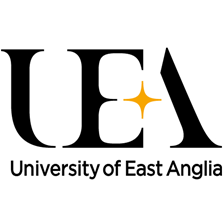
More play to engage students and deepen learning
The last few years have seen rapid and significant changes to the mode and format of teaching across higher education. For some of us, the opportunity to revise teaching approaches has resulted in embedding more play into our teaching.
Encouraging students to engage in play allows experimentation, risk-taking, exploring curiosity and the potential for failure, but in a low-stakes, safe setting. Such approaches can help students to develop a growth mindset and build a stronger sense of self-efficacy – their belief in their ability to succeed in a task. Play is also known to allow escape from the pressures and stresses of everyday life. Engaging in play as an adolescent leads to adults who are better prepared to cope with a turbulent and uncertain world.
Incorporating play into an undergraduate curriculum can be a powerful tool for developing student engagement, knowledge and skills such as problem-solving and team-working. Here we share examples of play-based activities that we have embedded into our teaching.
- Resource collection: Making online learning fun
- A play manual for academic development and skills
- Want to be a better teacher? My daughter showed me we need to play more
Building blocks for play
Blocks present myriad opportunities for play. With many shapes, sizes and colours and with various properties such as the ability to interlock, rotate, stack and more, blocks can be useful within STEM subjects. They can, for instance, be used to represent the components of cell membranes, the different cells themselves or the movement of molecules across a membrane. We have used blocks to help students understand the relationship between cell surface area and cell volume, consolidating biological knowledge alongside maths skills. We have also used Lego to help individuals and groups of students to consider their role as learners by asking them, during Welcome Week, to make something that they associate with being a successful student.
Encouraging creativity and group-based play in transition or induction activities, such as design challenges like collaboratively building a model of an effective study space, can help to encourage teamwork, remove socio-economic barriers between students and foster a sense of belonging and community within a cohort.
Developing study skills through play
Essays are a major element of assessment for many undergraduate degrees. Argumentative and descriptive writing that follows academic standards is often required as a key academic skill, but is also desirable for many employees. However, students often struggle with essay-based coursework. Deciding on the essay structure, contextualisation of the topic within the wider literature and concise writing all pose challenges for many students.
Essay planning is the foundation that will greatly contribute towards a successful essay. We have developed an interactive flash-card activity to help first-year undergraduate students visualise the different sections of an essay for a given topic. With this activity, pairs of students are assigned one section from the essay (introduction, topic of discussion one, two...and so on, and conclusion). Then individual cards are given to each group, and it is up to the students what subtopics or elements to include in their section, to be written on individual cards. Finally, all students collaborate as one group with all the written cards, building and planning the coursework in situ, and deciding which topics belong to the essay and which ones are repeated or out of scope. In this way, first-year students can lay the foundations for all their essay-based coursework in subsequent years.
Gamification of revision
Activities that enhance not only student learning but also memory are desirable. There are several pedagogic studies that highlight the importance of image-concept association. When images and educational concepts are presented together, we engage students’ iconicity skills. Through this process, students see a relationship or a resemblance between an image and a concept presented in lectures, which gives greater meaning to a particular concept.
Taking ion channel physiology as an example, this complex field requires knowledge across multiple disciplines such as electrophysiology, ion equilibrium potential and membrane depolarisation, making it a difficult topic for students to grasp through lecture-based delivery.
For ion channels, we created a game that uses flash cards containing images designed to resemble the lecture content. Such images are then paired with a question or riddle. Small teams of students are each given one deck of cards to review, ideally without consulting lecture notes. Students are meant to solve the question after looking at the image, prompting them to discuss lecture content between them and reinforcing their learning. This is particularly useful for revision and exam preparation.
Sweetening up the subject matter
Conceptually difficult topics can leave students feeling disheartened. In population genetics, for example, we ask students to forget about the individual and think about the population as a gene pool, a series of paired alleles. This can be difficult for students to visualise and requires confidence in specific calculations. So we provided a delicious conceptual aid.
After a lecture outlining the concept and associated calculations, we held small group workshops for students to apply this knowledge. As students entered, they were asked to choose any two sweets from a bag containing two types of sweets, but not to eat them. This captured the students’ interest and there were lot of questions about what the lesson would entail. Students were given decisions to make, such as which “allele”, represented by their sweets, would be dominant for the purpose of our population, giving them a sense of ownership and investment in the session. Having set these parameters, as a class we worked through the calculations on our “population” of sweets. Having created an open atmosphere in the room, we were able to further play with the metaphor of sweets as alleles and use this to describe different evolutionary forces and how they can influence population genetics.
There are many ways of building play into academic practice. As well as helping to engage students in class, they can help to foster a sense of community within a cohort. If you have play-based ideas you have used in your teaching that you want to share, you can spread the word by adding them to our play-based learning Zenodo community.
Noelia Dominguez Falcon is a lecturer, Kelly Edmunds is an associate professor and Becky Lewis is lecturer, all in the School of Biological Sciences at the University of East Anglia.
If you would like advice and insight from academics and university staff delivered direct to your inbox each week, sign up for the Campus newsletter.




